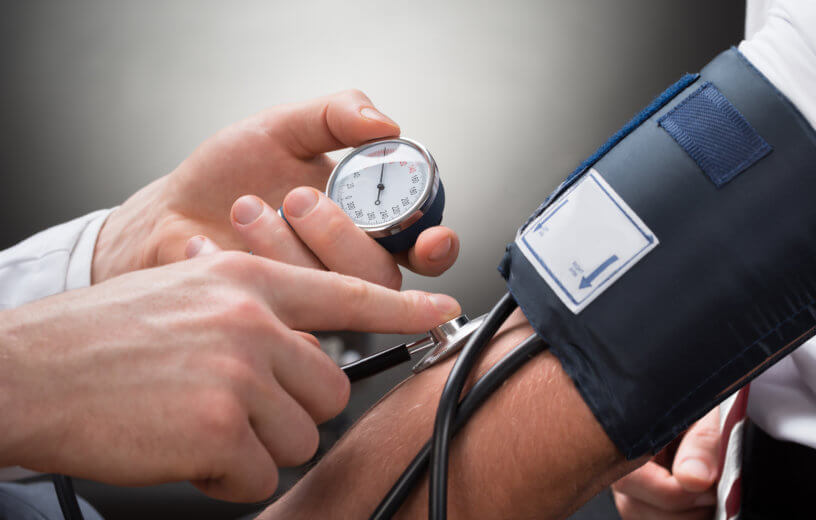EXETER, United Kingdom — Rolling up your sleeve for a blood pressure screening is routine part of any medical checkup. Many patients probably think blood pressure is blood pressure, readings will be the same no matter how you take it. While this may be true for some, researchers at the University of Exeter say you really can have different blood pressure readings depending on which arm you use. Their study finds this isn’t just some strange abnormality, it can also put you at greater risk for heart disease and stroke.
A study of nearly 54,000 people from the United States, Europe, Asia, and Africa reveals that a greater difference between blood pressure readings in both arms results in a higher risk for heart attack, stroke, and premature death over the next 10 years. While international guidelines recommend healthcare professionals measure blood pressure in both arms, researchers say this is rarely done.
“Checking one arm then the other with a routinely used blood pressure monitor is cheap and can be carried out in any healthcare setting, without the need for additional or expensive equipment. Whilst international guidelines currently recommend that this is done, it only happens around half of the time at best, usually due to time constraints. Our research shows that the little extra time it takes to measure both arms could ultimately save lives,” explains lead author Dr. Chris Clark in a university release.
“We’ve long known that a difference in blood pressure between the two arms is linked to poorer health outcomes. The large numbers involved in the INTERPRESS-IPD study help us to understand this in more detail. It tells us that the higher the difference in blood pressure between arms, the greater the cardiovascular risk, so it really is critical to measure both arms to establish which patients may be at significantly increased risk. Patients who require a blood pressure check should now expect that it’s checked in both arms, at least once.”
A small change in blood pressure can make a dangerous difference
Researchers explain that blood pressure rises and falls in a regular cycle with each heartbeat. Doctors measure this process in millimeters of mercury (mmHg) and the reading delivers two numbers for the patient. The first or upper number is the systolic blood pressure. It shows how much pressure your blood is applying on the artery walls when the heart beats. The second or bottom number is diastolic blood pressure. This reveals artery pressure when the heart rests between beats.
The study finds a large difference in systolic blood pressure between two arms may reveal a narrowing or stiffening of the arteries. This can affect a patient’s blood flow and put them at greater risk for cardiovascular disease. High systolic blood pressure also indicates that a patient may have hypertension. High blood pressure affects around one-third of the world’s population and is the leading cause of cardiovascular issues.
Study authors conclude that for every mmHg difference between a person’s arms, the risk of heart attack and stroke increases by one percent over the next 10 years.
More people at risk than current guidelines suggest
Researchers contend that their study shows current guidelines which sound the alarm for inter-arm blood pressure differences are too lenient. Clark and the team believe the findings provide a new “upper limit” for this condition. It would also mean many more patients dealing with blood pressure abnormalities are actually at risk for heart problems.
Currently, health guidelines in Europe consider a difference of 15 mmHg or more as the threshold for greater cardiovascular risk. The new study argues the threshold should actually be 10 mmHg or higher.
“We believe that a 10 mmHg difference can now reasonably be regarded as an upper limit of normal for systolic inter-arm blood pressure, when both arms are measured in sequence during routine clinical appointments. This information should be incorporated into future guidelines and clinical practice in assessing cardiovascular risk. It would mean many more people were considered for treatment that could reduce their risk of heart attack, stroke and death,” co-author Professor Victor Aboyans from Dupuytren University Hospital says.
The study finds that interarm differences of more than 10 mmHg occurs in 11 percent of patients with hypertension. About four percent of the general population deals with this pressure change.
The study appears in the journal Hypertension.
